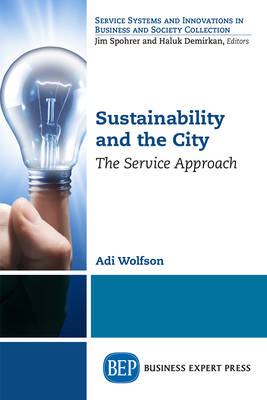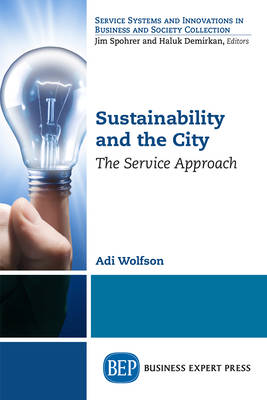
- Afhalen na 1 uur in een winkel met voorraad
- Gratis thuislevering in België vanaf € 30
- Ruim aanbod met 7 miljoen producten
- Afhalen na 1 uur in een winkel met voorraad
- Gratis thuislevering in België vanaf € 30
- Ruim aanbod met 7 miljoen producten
Zoeken
Omschrijving
Cities are without a doubt one of the miracles of human creation and the embodiment of the human environment. Insofar as they are large and densely populated human settlements with defined legal and political boundaries that comprise clusters of buildings, open spaces, public facilities and infrastructure, cities are mainly spaces of services that are exchanged between a wide variety of stakeholders-namely, residents, traders, visitors, and the city authorities. Moreover, the provision of cities' services has profound effect on the local and global sustainability. Thus, municipal services should comprise environmental, social, and economic values, which are designed, produced, and delivered in concert. Over the years, a variety of new urban models and concepts have been designed and proposed as viable means to reestablish the bond between the human and the natural environments, to increase the quality of life within cities and to reduce the impacts that cities have on the social and natural environments (e.g., sustainable city, smart city, or resilient city). Herein, a new model of the service city is presented, including architecture and several pertinent examples, which considers it as a platform that manages and integrates the services and systems currently provided by the city while offering additional supporting services to increase the effectiveness of the value and to achieve the goal of sustainability.
Specificaties
Betrokkenen
- Auteur(s):
- Uitgeverij:
Inhoud
- Aantal bladzijden:
- 141
- Taal:
- Engels
Eigenschappen
- Productcode (EAN):
- 9781947441910
- Verschijningsdatum:
- 30/10/2017
- Uitvoering:
- Paperback
- Formaat:
- Trade paperback (VS)
- Afmetingen:
- 152 mm x 229 mm
- Gewicht:
- 213 g

Alleen bij Standaard Boekhandel
+ 61 punten op je klantenkaart van Standaard Boekhandel
Beoordelingen
We publiceren alleen reviews die voldoen aan de voorwaarden voor reviews. Bekijk onze voorwaarden voor reviews.











